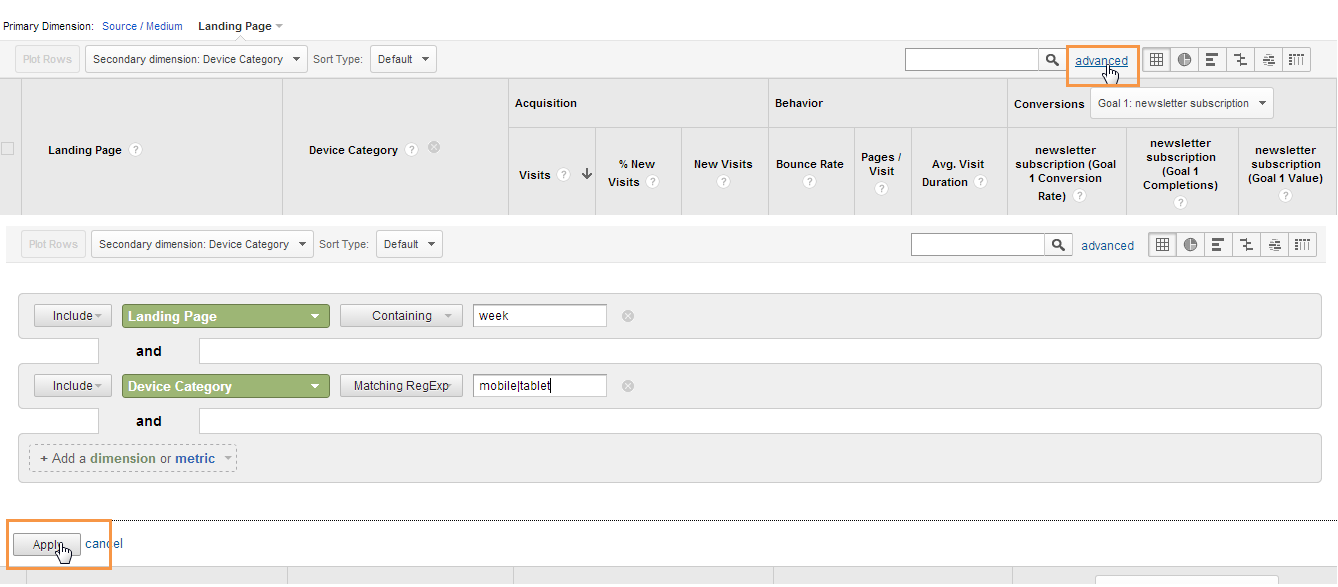Unlocking the Power of Second Dimension Analytics for Boosted Data Insights and Decision-Making
In the world of information analytics, primary dimensions usually take the spotlight, however real deepness of insights exists within the world of secondary measurements. These added data factors offer a nuanced point of view that can brighten patterns and relationships not easily noticeable at first glance. By taking advantage of the power of second dimension analytics, companies can introduce surprise fads, uncover correlations, and extract much more significant final thoughts from their information. The possibility for boosted decision-making via the utilization of these secondary dimensions is vast, promising a deeper understanding of complex data collections and leading the way for more informed strategic choices.
Relevance of Second Measurements
Checking out the importance of secondary measurements in analytics introduces the covert layers of data understandings vital for notified decision-making in different domains. Second measurements offer a much deeper understanding of primary information by using additional context and viewpoints. By integrating additional dimensions right into analytics, organizations can remove a lot more nuanced and extensive understandings from their datasets.
One key relevance of additional measurements is their ability to sector and categorize main information, permitting a more in-depth analysis of certain subsets within a dataset. When looking at the data as a whole, this segmentation makes it possible for companies to recognize patterns, trends, and outliers that could not be apparent. Secondary dimensions assist in revealing correlations and dependencies in between different variables, leading to even more exact projecting and predictive modeling - secondary dimension.
Additionally, second measurements play an essential function in improving information visualization and reporting. By adding additional measurements to visualizations, such as graphes or charts, analysts can create much more insightful and helpful depictions of information, promoting better communication of findings to stakeholders. Overall, the integration of additional dimensions in analytics is critical in opening the complete possibility of information and driving evidence-based decision-making.
Secret Advantages of Using Additional Measurements
Making use of secondary measurements in analytics uses companies a strategic benefit by boosting the depth and granularity of information understandings. One crucial advantage of integrating secondary dimensions is the capacity to sector and filter information, permitting a much more in-depth analysis of specific aspects within a dataset. This division makes it possible for companies to get a more nuanced understanding of their target market, performance metrics, and other crucial information factors. By dissecting data utilizing second measurements such as time, place, device kind, or individual demographics, organizations can uncover patterns, fads, and connections that might or else remain hidden.
Moreover, the use of second measurements enhances the context in which primary data is translated. By leveraging second measurements in analytics, organizations can harness the full capacity of their data to drive much better decision-making and attain their organization objectives.
Advanced Data Analysis Techniques
A deep dive into innovative information evaluation techniques reveals sophisticated methods for extracting important insights from complex datasets. One such technique is device discovering, where formulas are utilized to determine patterns within information, anticipate results, and make data-driven decisions. This method enables the automation of analytical model structure, enabling the processing of large volumes of information at a much faster rate than typical approaches.
One more sophisticated technique is predictive analytics, which makes use of statistical algorithms and artificial intelligence techniques to forecast future end results based upon historical data. By examining patterns and patterns, companies can anticipate consumer habits, market trends, and potential threats, equipping them to make proactive choices.
Furthermore, message mining and sentiment analysis are beneficial methods for extracting understandings from disorganized data resources such as social media sites remarks, client evaluations, and survey reactions. By analyzing message data, companies can comprehend customer viewpoints, determine emerging fads, and improve their products or solutions based on responses.
Enhancing Decision-Making Through Second Measurements

Enhancing decision-making via secondary dimensions makes it possible for companies to make even more educated and targeted strategic options. For instance, by segmenting customer data based upon second dimensions like buying background or engagement levels, business can customize their advertising and marketing techniques to certain target market sectors, leading to enhanced conversion prices and customer fulfillment. Secondary measurements can assist identify correlations and relationships between different variables, enabling companies to make data-driven choices that drive development and earnings.
Carrying Out Additional Dimension Analytics
When integrating secondary measurements in why not look here analytics, organizations can open deeper understandings that drive tactical decision-making and boost general efficiency. This entails recognizing the particular questions the organization looks for to respond to and the information points called for to address them.

Furthermore, organizations need to take advantage of advanced analytics devices and technologies to enhance the process of incorporating additional measurements. These tools can automate data handling, evaluation, and visualization, allowing companies to concentrate on interpreting insights as opposed to hand-operated data control.
Verdict
In verdict, second measurement analytics play a crucial role in boosting information understandings and decision-making procedures. By using sophisticated data analysis techniques and executing secondary dimensions effectively, companies can unlock the power of their data to drive tactical business choices.
In the world of information analytics, main dimensions often take the limelight, yet the real depth of insights exists within the world of additional dimensions.Making use of second dimensions in analytics provides organizations a critical benefit by enhancing the depth and granularity of information insights. By leveraging secondary measurements in analytics, organizations can harness the full potential of their information to drive much better decision-making and moved here accomplish their business purposes.
Carrying out data recognition processes and normal audits can assist maintain information high quality and integrity.
By using advanced information analysis strategies and carrying out secondary measurements efficiently, companies can unlock the power of their information to drive calculated business choices.